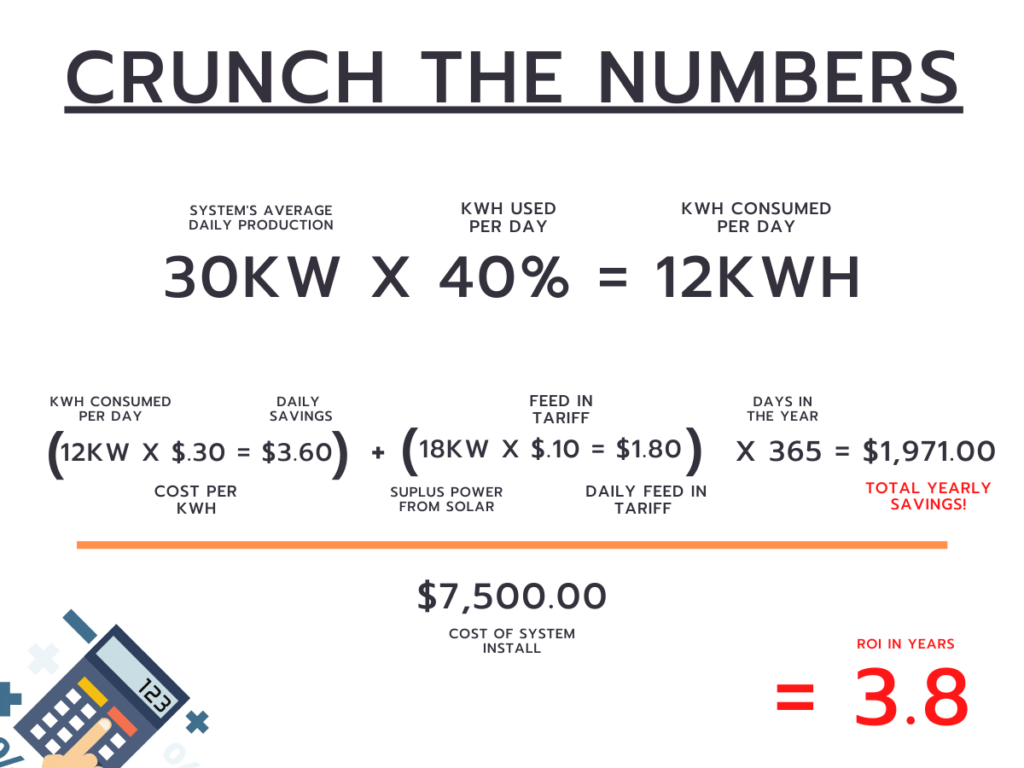If you have turned on the TV or been scrolling through your social media feeds you will probably have noticed, you are being bombarded with ads for Solar. From Government rebates to eliminating bills, every ad seems to promise the world. Installing Solar Panels is a great way to reduce your carbon footprint and help the environment but does installing solar really save you money?
The short answer in a lot of cases is yes (if done properly). With rebates available (STC’s), the high cost of power in Australia and technology advances, it does. However, if some poor decisions are made along the way, it can be a massive waste of money.
In this article, we will focus on the economics of solar. How to calculate the ROI for yourself and if it is going to save you money or not.
Firstly, you need to understand how much power you are using and when you are using it.
The easiest and best place to start is a recent energy bill. All of your usage is broken down on the bill and it means you can begin to understand your power usage easily. On your bill your total usage in kWh’s (kilowatt hours) should be easy to find. If you have access to bills for a few periods, that is great. It means you can get a better understanding of your usage as the season changes. Once you find it, divide it by the number of days in the bill period so you know your daily usage in kWh. You also need to know your cost per kWh which is also on the bill.
Once you know how much your usage is and how much it costs, you need to put an estimate on how much you use during the day vs how much you use at night. Obviously solar works during the day so your evening energy will still need to be bought from the grid (unless you get a battery). Keep your day time usage number in kWh handy.
Next you need to establish how big your system needs to be and how much will it cost?
If you don’t know how big you want your system to be, a rule of thumb for working out an ideal system size is to take your daytime usage (you calculated this earlier) in kW’s and divide it by 4. This number is based on what’s called a system’s average daily production rate. What it means is, that a system will generate around 4 times its size in daily energy. It varies depending on where you are, however the 4X rule is a good guide. So if you use 24kW’s per day, you will need around a 6kW solar system.
If you aren’t sure on how much your system will be and aren’t ready to get any quotes, multiply the system size you have worked above by $1,000.00. E.G. a 6kW system will be $6,000.00. $1,000.00 per kW will be a good system installed in Australia. You can get cheaper systems however you generally get what you pay for.
To recap the key information you know so far to calculate your ROI:
- How much you pay per kW for electricity
- How many kWh of electricity you use during the day, every day
- How much your system will cost
- How much power your system will create
Now, from here all you need to do is, multiply your systems daily production by your current cost per kWh. Then multiply that to end up with an annualised figure. This number will be your total annual savings.
Once you have that number, take your total system cost and divide it by your total annual savings. The number that comes out, is how many years it will take for your system to to pay itself back. It is that simple!
An example below shows you the numbers assuming a 7.5kW solar system costing $7,500.00 with the households’ daytime usage being 40% of the systems average output of 30kWh per day at .30c per kWh. We have used a feed in tariff of $0.10

Things to note:
If you are thinking about getting a battery, the numbers are slightly more complicated. It will mean even less energy from the grid at night as your battery is charging during the day. To get the most value out of a battery, you need to consider a solar panel system big enough to not only power your daily usage but also charge your battery.
Solar rebates vary state to state and are often actually the STC program. They are generally factored into the sale price. Don’t confuse yourself too much with these, just make sure you are getting them, and when you do your numbers you and doing them AFTER the rebates/STC’s have been applied to the total cost of the system.
There are also some very good solar savings calculators on the internet however it can be hard to understand what calculations are going on behind the scenes so always try and crunch the numbers for yourself first.